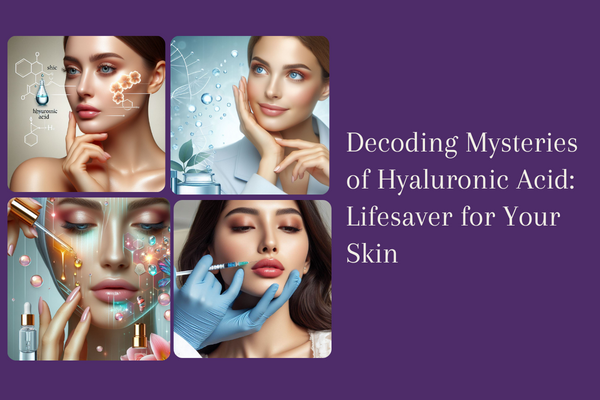Table of Contents
ToggleDecoding Hyaluronic Acid
Hyaluronic acid, often referred to as hyaluronan or hyaluronate, is a naturally occurring, viscous substance produced by our body. It is abundantly present in various parts of the body, with a high concentration in the eyes, joints, and skin.
The versatility of hyaluronic acid lies in its numerous benefits and applications within the body. It facilitates smooth movement, especially in the joints, preventing discomfort and injury due to bone friction. Additionally, it plays a crucial role in hydration, with an impressive ability to retain water. A mere quarter-teaspoon of hyaluronic acid can hold approximately one and a half gallons of water. This property makes it a popular ingredient in treatments for dry eyes and moisturizing skincare products like creams, lotions, ointments, and serums.
Hyaluronic acid contributes to skin flexibility, aiding in skin stretching and reducing wrinkles and lines. It is also known to expedite wound healing and minimize scarring.
Hyaluronic Acid: Its Presence in the Body
Hyaluronic acid, a carbohydrate naturally produced in the human body, is recognized as one of the most hydrophilic molecules. It is ubiquitously present in nearly all parts of the body, performing different functions in each area. The average quantity of Hyaluronic Acid in our bodies is estimated to be around 15 grams, serving multiple functions across various body parts.
The Role of Hyaluronic Acid in Skin Hydration and Elasticity
Hyaluronic acid has the potential to enhance the moisture content in your skin, offering several skin benefits, including reducing wrinkles and promoting wound healing, among others. It plays a crucial role in the wound healing process and decreases with age, making us more prone to sagging and wrinkles.
Hyaluronic acid, often referred to as hyaluronan or hyaluronate, is a carbohydrate that naturally occurs in the human body. It is a linear polymer, which means it consists of disaccharide units linked together in a straight chain. This linear structure is what gives hyaluronic acid its unique properties and enables it to perform various functions within the body. The molecular structure of hyaluronic acid comprises repeating disaccharide units of D-glucuronic acid (GlcUA) and N-acetylglucosamine (GlcNAc), alternately joined by β-1, 3 and β-1, 4 glycosidic bonds. The molecular weights of hyaluronic acid from different sources can vary significantly, ranging from 10^4 to 10^7 Da.
The Building Blocks of Hyaluronic Acid
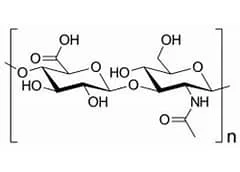

Hyaluronic Acid: A Natural Moisture Magnet
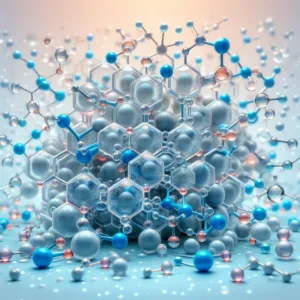

Hyaluronic acid is a humectant, which means it has the ability to draw water towards it and help the skin retain this moisture. When applied to the face, it attracts and holds moisture from the environment, replenishing the skin’s water content.
The exceptional water retention capacity of hyaluronic acid allows it to hold water molecules, making it an excellent hydrating agent. A quarter-teaspoon of hyaluronic acid can hold about one and a half gallons of water. This is why hyaluronic acid is often used for treating dry eyes and is also a common ingredient in moisturizing skincare products like creams, lotions, ointments, and serums.
Collagen and Elastin: The Youthful Trio with Hyaluronic Acid
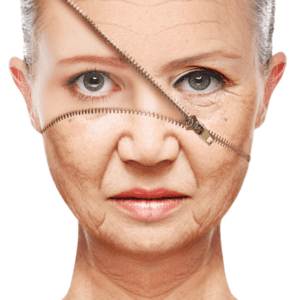

Hyaluronic acid plays a pivotal role in promoting collagen production, ensuring your skin remains supple and resilient. Collagen is a protein that imparts a youthful look and flexibility to your skin. As we age, collagen levels decrease, causing the skin to lose its flexibility and leading to the formation of fine lines and wrinkles.
Studies have found that wounds in mice treated with hyaluronic acid showed more improvement than those treated with water. This is because the levels of two types of collagen increased in the region around the wounds treated with hyaluronic acid.
Hyaluronic acid helps regenerate the skin’s underlying architecture by increasing moisture, stimulating collagen-elastin synthesis, promoting tissue repair, and combating ultraviolet radiation.
As we age, the number of collagen fibers in the dermis drastically declines. The collagen fiber-producing cells slow down, and the remaining fibers stiffen, break, and lose form.
Elastin fibers begin to break and lose elasticity as well. The loss of collagen and elastin results in wrinkled and sagging skin.
Hyaluronic acid is instrumental in maintaining skin elasticity by stimulating collagen production, thereby keeping your skin supple and resilient. This results in fewer fine lines and wrinkles over time, imparting a more youthful appearance.


Hyaluronic Acid: A Key Ingredient in Skincare Products
Hyaluronic Acid: Available in Serums, Creams, and Injections
Hyaluronic acid, also known as hyaluronan or hyaluronate, is a naturally occurring carbohydrate in the human body. It is a key ingredient in skincare products due to its ability to hydrate and plump the skin. It is primarily used in moisturizing creams, lotions, and serums. In its raw form, hyaluronic acid forms a protective film on the surface of the skin that prevents water from evaporating, thereby moisturizing the surface layers of the skin and providing a tightening effect.
In addition to topical applications, hyaluronic acid is also used in injectable dermal fillers to help eliminate wrinkles and add volume to the face and lips. These fillers are typically administered by a trained medical professional.
Selecting the Right Hyaluronic Acid Product for Your Skin Type
Choosing the right hyaluronic acid product for your skin type can be tricky than straightforward. You have to analyse your skin type and then read the product description carefully before selecting the products.
Oily Skin Types: Water-based, oil-free, noncomedogenic moisturizers are suitable for the skin types, including oily and acne-prone skin.
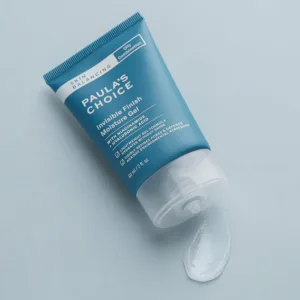

Normal/Dry Skin: Cream or oil-based moisturizers create a physical barrier that seals in moisture.
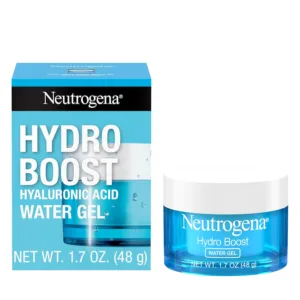

Sensitive Skin: Water-based, oil- and fragrance-free, noncomedogenic moisturizers reduce the risk of irritation.
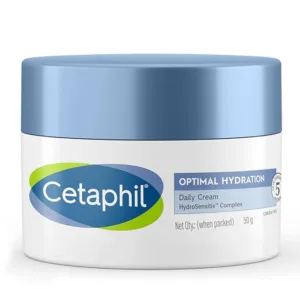

Very Dry, Itchy or Eczema-prone Skin: Creams typically contain ceramides to hydrate and repair the skin’s protective barrier.


Incorporating Hyaluronic Acid into Your Skincare Routine: Some Tips
Incorporating hyaluronic acid into your skincare routine can be simple and beneficial. Here are some tips:
- Cleanse: Start with a gentle cleanser to remove impurities from your skin.
- Apply Hyaluronic Acid Serum: After cleansing, apply a hyaluronic acid serum to your slightly damp face. This will help lock in moisture.
- Moisturize: Follow up with your favorite moisturizer to seal in the goodness.
Remember, it’s important not to overdo it with hyaluronic acid as using too much can actually have the opposite effect and dry out the skin. Consider pairing hyaluronic acid with other hydrating ingredients, such as glycerin or ceramides, for even more moisture.
Advantages of Aesthetic Procedures with Hyaluronic Acid
Dermal Fillers with Hyaluronic Acid
Hyaluronic acid is a key ingredient in dermal fillers due to its hydrating and plumping properties. It’s primarily used in moisturizing creams, lotions, and serums. In its pure form, hyaluronic acid forms a protective film on the skin’s surface, preventing water evaporation and moisturizing the skin’s surface layers, providing a tightening effect.
In addition to topical applications, hyaluronic acid is also used in injectable dermal fillers to help reduce wrinkles and add volume to the face and lips. These fillers are usually administered by a trained medical professional. The fillers attract more water, enhancing the volumizing effect and adding hydration.
Non-surgical Facelifts and Volumizing Treatments
A non-surgical facelift is a procedure designed to temporarily refresh, firm, or plump the skin on your face. It doesn’t require large incisions, general anesthesia, or an overnight hospital stay. Non-surgical facelifts typically use a combination of minimally invasive and non-surgical techniques. Treatments such as dermal fillers and fat injections add volume for a smoother, younger look.
Lip Fillers and Contouring
Lip fillers are injections used to transform the natural lip into a fuller and more voluminous appearance. These injections contain hyaluronic acid that enhances the shape and texture of your lip. The hyaluronic acid injection supports and shapes the tissues of the lips. It can control the desired lip volume that the person needs. Lip filler is not a permanent procedure. The injection taken during the lip filler process may need to be taken again to plump up the lip shape and to regain the perfect pout you need while taking selfies.


Debunking Myths Surrounding Hyaluronic Acid
There are several misconceptions surrounding its use in skincare and aesthetic procedures. Let’s debunk some of these myths.
A. Addressing Misconceptions About Safety
Myth: Hyaluronic Acid is unsafe because it’s an “acid”.
Fact: Despite its name, Hyaluronic Acid is not a traditional “acid”. It’s a sugar molecule that occurs naturally in our bodies and plays a key role in skin hydration and volume. It’s safe for topical use and injectable forms are also generally safe when administered by a trained professional.
B. Clarifying Its Compatibility with Various Skin Types
Myth: Hyaluronic Acid isn’t suitable for all skin types.
Fact: Hyaluronic Acid is actually one of the most skin-friendly ingredients out there. It is appropriate for all skin types, especially sensitive and acne-prone skin. It’s also beneficial for both dry and oily skin types. For dry skin, it provides much-needed hydration, while for oily skin, it helps regulate oil production.
C. Dismissing Common Fears Related to Aesthetic Procedures
Myth: Using Hyaluronic Acid in aesthetic procedures leads to unnatural results.
Fact: When used correctly, Hyaluronic Acid can produce very natural-looking results. It’s used in dermal fillers to restore lost volume, smooth lines, and enhance facial contours. The results depend on the skill and experience of the practitioner, so it’s important to choose a qualified professional for any aesthetic procedures.
Remember, it’s always important to do your own research and consult with a healthcare professional before starting any new skincare regimen or undergoing aesthetic procedures.
Expert Tips for Maximizing Hyaluronic Acid Benefits
Hyaluronic Acid (HA) is a powerful skincare ingredient known for its hydrating properties. Here are some expert tips to maximize its benefits.
A. Dermatologist Recommendations for Optimal Results
1. Apply on Damp Skin: Dermatologists often recommend applying HA serums on damp skin. This is because HA is a humectant, which means it draws water into the skin. Applying it on damp skin can help it pull in that moisture for extra hydration.
2. Use the Right Amount: A pea-sized amount of HA serum is usually sufficient for the face. Excessive usage can leave a sticky residue.
3. Regular Use: Consistency is key with HA, as regular use over time will yield the best results.
B. Using Hyaluronic Acid in combination with Other Skincare Ingredients
1. Vitamin C: HA can be effectively paired with Vitamin C, another potent skincare ingredient. Vitamin C can help protect the skin from damage, while HA provides hydration.
2. Retinol: If you’re using retinol, a moisturizer with HA can help offset the dryness often associated with retinol use.
3. Peptides: Peptides and HA together can help boost collagen production, improving skin elasticity and reducing the appearance of wrinkles.
C. Lifestyle Factors That Enhance Its Effectiveness
1. Hydration: Drinking plenty of water can help keep your skin hydrated from the inside out, enhancing the effects of HA.
2. Diet: Eating a diet rich in antioxidants can help protect your skin from damage, enhancing the overall health of your skin and the effectiveness of skincare products like HA.
3. Avoid Harsh Cleansers: Overly harsh cleansers can strip the skin of its natural oils and reduce the effectiveness of HA. Use a gentle, pH-balanced cleanser instead.
Remember, everyone’s skin is unique, so what works best for one person might not work for another. It’s always a good idea to do a patch test when trying a new product and consult with a dermatologist if you have any concerns.
Frequently Asked Questions


A. Addressing Common Concerns About Hyaluronic Acid
Q1: Is Hyaluronic Acid safe to use?
Yes, Hyaluronic Acid (HA) is generally safe to use. It’s a naturally occurring substance in our skin that helps keep it hydrated and plump. However, as with any skincare product, it’s always a good idea to do a patch test when trying a new product and consult with a dermatologist if you have any concerns.
Q2: Can I use Hyaluronic Acid if I have sensitive skin?
Yes, Hyaluronic Acid is suitable for all skin types, including sensitive skin. It’s a gentle and hydrating ingredient that can benefit your skin without causing irritation.
B. Guidance on Potential Side Effects and Risks
Q1: Are there any side effects of using Hyaluronic Acid?
Topical Hyaluronic Acid is generally well-tolerated and doesn’t often cause side effects. However, some people may experience a mild reaction such as redness or irritation. If you notice any adverse reactions, stop using the product and consult a dermatologist.
Q2: Are there risks associated with Hyaluronic Acid fillers?
Like with any surgery, there may be some side effects. These may include temporary bruising, redness, and swelling at the site of the injection. In rare cases, people may have an allergic reaction to the filler. It’s important to have these procedures done by a qualified professional to minimize risks.
C. Preparing for and Recovering from Aesthetic Procedures
Q1: How should I prepare for a procedure involving Hyaluronic Acid fillers?
Before the procedure, avoid medications or supplements that can increase bleeding or bruising, such as aspirin, ibuprofen, or vitamin E. Also, avoid alcohol and smoking. Always consult with your healthcare provider for personalized advice.
Q2: What is the recovery process like after getting Hyaluronic Acid fillers?
Recovery is usually straightforward. You might experience some redness, swelling, or bruising, but these effects should subside within a few days. Avoid strenuous exercise, sun exposure, and alcohol for at least 24 hours after the procedure. Always adhere to your healthcare provider’s specific aftercare guidelines.
Conclusion
Recap of the Key Benefits of Hyaluronic Acid
Hyaluronic acid (HA) is an essential fatty acid found in our skin. It helps to keep our skin hydrated and healthy. It’s safe for topical use and injectable forms are also generally safe when administered by a trained professional. HA is suitable for all skin types, including sensitive and acne-prone skin. It’s beneficial for both dry and oily skin types.
Given its numerous benefits, it’s worth exploring the use of Hyaluronic Acid in your skincare routine. Whether you choose to use it in the form of a serum, cream, or even as a dermal filler, HA can help to hydrate your skin, reduce the appearance of wrinkles, and enhance your skin’s overall texture and appearance.
We hope this guide has helped debunk some common myths about Hyaluronic Acid and highlight its benefits. If you have any experiences with HA that you’d like to share, or if you have any further questions, we encourage you to reach out. Remember, everyone’s skin is unique, so what works best for one person might not work for another. Always consult with a Skincare Expert if you have any concerns.
We’d love to hear from you! If you have any thoughts, experiences, or questions about Hyaluronic Acid, please feel free to leave a comment below. Your insights and inquiries not only help us create better content, but they also help others in our community learn and grow.
If you’ve been using Hyaluronic Acid and have seen some positive changes, why not share your journey? Post your before-and-after photos, daily skincare routine, or just a simple update on your progress on social media. Don’t forget to use our branded hashtag #MyHAJourney. By sharing your experiences, you can inspire others and become part of a community that supports and learns from each other. We can’t wait to see your posts!
- RELATED ARTICLES
- YOUTHFUL SKIN UNLEASHED: 7 POSITIVE HABITS BACKED BY EXPERT INSIGHTS

